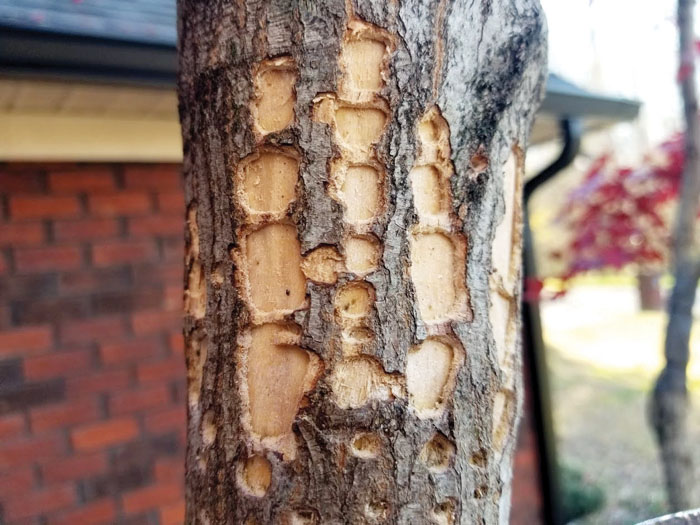Darrell Blackwelder column: Woodpecker damage
Published 12:00 am Sunday, December 13, 2020
A lady emailed me earlier this week and was upset that her favorite Japanese maple had become a victim of some woodpecker damage. The woodpecker had made a series of large holes and gaps both vertically and horizontally, girdling a major tree limb in its canopy. Without the benefit of a positive identification, the woodpecker species was most likely a yellow-bellied sapsucker. These birds are known to make a cylindrical pattern with small holes with machine-like accuracy on tree trunks and limbs. Unfortunately, the holes were elongated without pattern with major tissue damage. The damage was so intense that the damaged limb will most likely die, but fortunately not the entire tree. This girdling process interrupts the vascular system restricting nutrients and water supply to the limb and branches.
Generally, insects are a major source of food for this bird, but they also enjoy sipping the sweet sap with their brush-like tongues. Trees such as pecan, maple, elm and apple are often a favorite of these birds, however there are many other types of trees that also can be damaged. Those that have noticed damage to their trees can discourage further damage by wrapping hardware cloth or burlap over the damaged area. More detailed information on yellow bellied sap sucker woodpeckers can be found at https://content.ces.ncsu.edu/yellow-bellied-sapsucker.
Darrell Blackwelder is the retired horticulture agent and director with the North Carolina Cooperative Extension Service in Rowan County. Contact him at deblackw@ncsu.edu .




